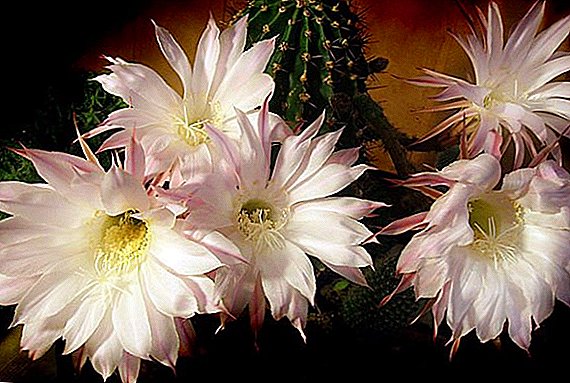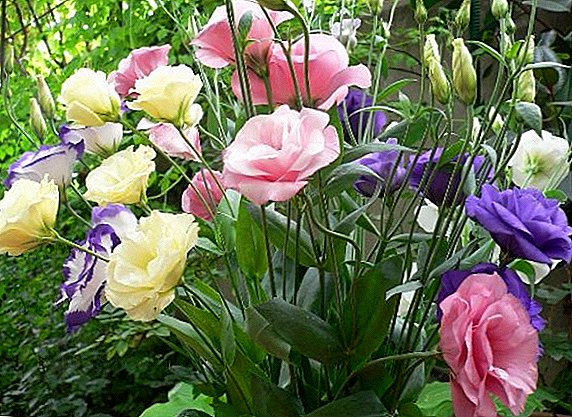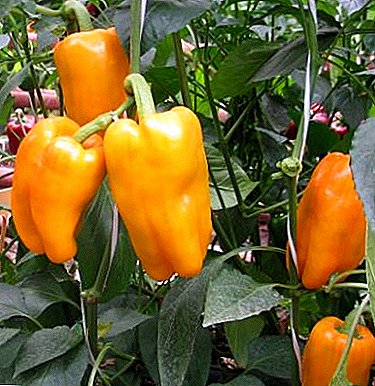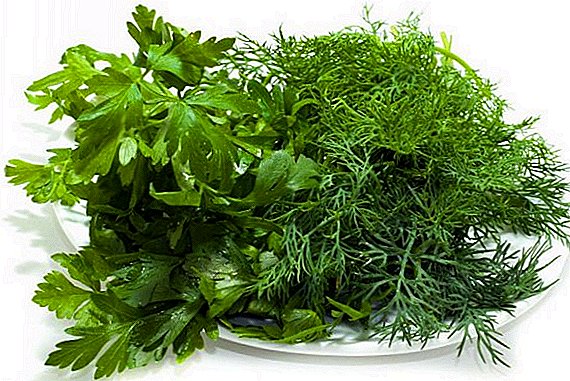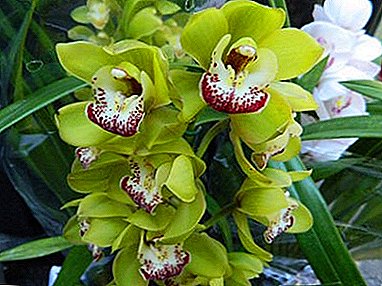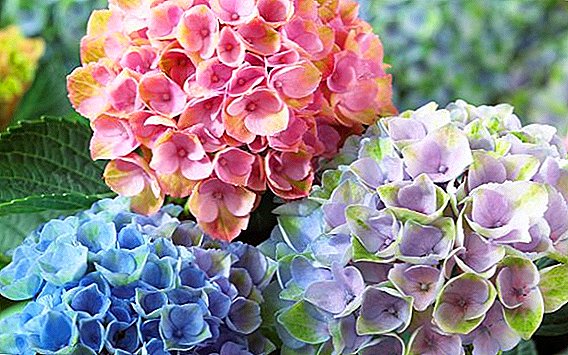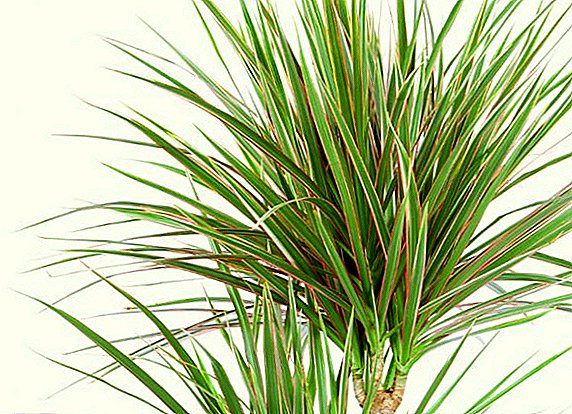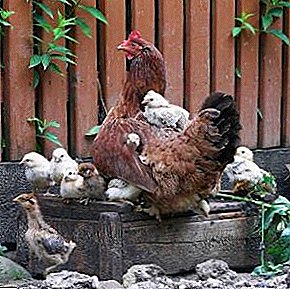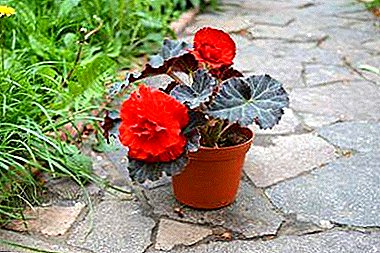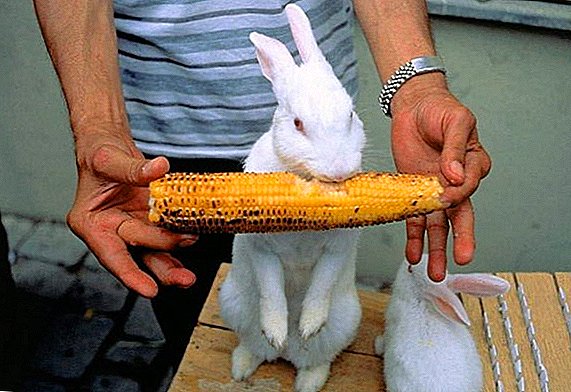 The question of the possibility of including corn in the rabbit diet is worried not only by the tribal breeders of these lovely fluffies, but also by those animal owners whose main breeding goal is dietary meat and valuable fur. In this article we will look into the issues of this issue.
The question of the possibility of including corn in the rabbit diet is worried not only by the tribal breeders of these lovely fluffies, but also by those animal owners whose main breeding goal is dietary meat and valuable fur. In this article we will look into the issues of this issue.
The benefits and harm of corn for rabbits
Appropriate care and full feeding is one of the rules for proper rabbit rearing. Corn, or maize, plays an important role of coarse-grained food in the diet of such inhabitants of the household as rabbits.  Breeders actively use it to fatten mammals to slaughter, as this product is very generous in proteins and carbohydrates, and therefore has a high nutritional value. In addition, when the pets eat corn, they thereby develop the jaw muscles.
Breeders actively use it to fatten mammals to slaughter, as this product is very generous in proteins and carbohydrates, and therefore has a high nutritional value. In addition, when the pets eat corn, they thereby develop the jaw muscles.
The question of whether to give corn to rabbits, and if so, in what portions and in what form, decides directly the owner. However, the benefits of this cereal for these animals is obvious.
Familiarize yourself with step-by-step instructions for making troughs and drinking bowls for rabbits yourself.
Corn is one of the representatives of one-year cereal crops. It has a strong and well-folded stalk, reaching a height of up to three meters, and the hard and hard-to-touch leaves of elongated shape have notches on the edges. Corn cobs with grains appear during the fruiting period in the peculiar bosoms created by the leaves.  The nutritional value of corn feed includes the following constituent particles:
The nutritional value of corn feed includes the following constituent particles:
- proteins (their volume in cereal ranges from 8 to 13 percent);
- carbohydrates (the most capacious and fast-absorbing element - from 65 to 78 percent);
- cellulose (the nutrient mass, which increases the intestinal motility of the animal, is 2-5 percent of the total volume).
A balanced diet will help pets to develop properly and continue to be healthy and active. Find out whether it is possible to give bran, bread and cereals to rabbits.
In addition, the described product is rich in an elixir from vitamins of category B, retinol, tocopherol, biotin, nicotinic and ascorbic acids, as well as chemical elements K (potassium), Se (selenium), Cu (cuprum, or copper), S (sulfur, sulfur ), P (phosphorus), Fe (ferum, or iron).
Corn kernels are a product that is not only easily digestible by the rabbit digestive system, but also contributes to its full and proper functioning. For fattening of farm animals, not only grain of cereal is used, but also its tops, that is, the green leafy part of the plant.  The inclusion of corn in the nutritional diet of rabbits contributes to the growth of smooth and shiny fur with excellent undercoat.
The inclusion of corn in the nutritional diet of rabbits contributes to the growth of smooth and shiny fur with excellent undercoat.
How and how much to give
Rabbit bosses first of all try to get nutritious meat, high-quality skins and fur from their pets, which is very much in demand in the current trade. And corn is a true source of all the necessary for this vitamins, macro-and micronutrients.
Did you know? The chewing function of these fluffs is developed so uniquely that in a minute they are able to perform 120 chewing movements, and the variety of taste buds is amazing: there are about 17,000 in rabbits.
However, it is worth remembering that introducing this grass into the rabbit menu is necessary gradually, allowing the animal's gastrointestinal system to get used to the dietary innovations. The specificity of feeding rabbits with corn consists in the following nuances:
- grain and maize cobs are given to young rabbits as a whole softened or ground, in portions of 70-150 g at a time on one head;
- culture stalks can be included in the diet at any time during their formation, however, it is highly recommended to feed pets with extremely rough stems, as they contain poorly digestible cellulose;
- It is also not advisable to use maize as a mono-feed, since this leads to a violation of the biological exchange in the body and, accordingly, a set of excess fat mass. Rabbits are predisposed to fat deposits on the chin, which is advisable at the time of akrol, as the region of the sternum increases, from which later mothers fight down the fluff to arrange the nest and warm the babies. In other circumstances, obesity is not only irrational in raising rabbits, but also causes irritation in the latter: they can cause themselves injuries with their teeth and claws, trying to get rid of excess weight.
 Before you feed the corn, it must be processed:
Before you feed the corn, it must be processed:- The cobs are washed and, if necessary, crushed (if you chop up the cereal, then it should be enough for one meal, as the prepared stock may acquire an unpleasant smell and bitter taste that frightens animals). After washing the cobs, it is preferable to disinfect them only with boiling water. This product is perfect for grinding off regularly growing teeth of animals, replacing the natural woody or shrub bark. Pets gnaw the cobs and directly their base. This grass is easily digested, supplying the rabbit body with the required energy due to the rapid absorption of carbohydrates.
- Whole seeds are soaked in water for no more than a couple of hours (when using more prolonged soaking, they sour);
- Corn leaves should not be perfectly fresh, so that the rabbits are not poisoned: slightly dried or dried leaves can be crushed and given to animals.
 Decorative species of rabbits are recommended to feed with a cereal no more than two times for seven days. The benefit of it happens when the diet includes its moderate quantity: then the rabbits truly enjoy such a delicacy.
Decorative species of rabbits are recommended to feed with a cereal no more than two times for seven days. The benefit of it happens when the diet includes its moderate quantity: then the rabbits truly enjoy such a delicacy.Rabbitheads should consider whether rabbits eat burdocks and wormwood.
For adults
Corn cobs with the addition of vegetables, as well as dried or dried herbal mixtures of rabbits are fed throughout the day. The recommended rate per day for adult rabbits (aged from nine months to four or five years) is equal to the rate of 150 g per day per animal.
Corn leaves are allowed to be given to animals at any age and in any quantity. Green tops are served fresh, but it must be pre-washed from dirt and dust. Crushed maize leaves, but also in combination with other green feed additives, such as dandelions or burdock, will be a true treat for your pets. 
Krolchikham during pregnancy and after okrol
Suckling female animals need intensive feeding. At the third stage of pregnancy, the maximum growth rate of embryonic embryos can be traced. If the owner is set to get a strong and healthy future generation, he needs to worry about the menu of the bunny rabbit at this stage.
Important! It is not recommended to give maize to rabbits preparing for mating. Considerable nutritional value of grain feeds provokes obesity and loss of interest in reproduction in males.During the first week after hatching, the female must not only renew her vitality, but also ensure that the children are fed with nutritious milk. In this time period, corn cobs will be very appropriate in a rabbit diet. It would be more correct to give corn in a crushed version together with other grains at the rate of 100-150 g per head.

Young stock
In the menu of young rabbits (from the age of one and a half to two months), in addition to breast milk, you need to include feed of plant origin. At this age, they are happy to use young saturated shoots of maize. Due to the high percentage of vitamins and fiber, this cereal culture is very useful for the younger body.
It is strictly forbidden to give young rabbits corn in boiled form, and it is recommended to include leaves of cereal in their diet in extremely moderate quantities.
You will certainly be useful to get acquainted with all the features of feeding rabbits at home.
The nutrition of young animals differs from the diet of adults in that the corn, especially the young, like any other new food, must be introduced gradually, carefully monitoring the reaction of the cubs. It is necessary to eliminate the plant from the menu in the following cases:
- in the event of diarrhea or changes in the consistency of feces;
- during a reflex eruption of the contents of the stomach;
- with the manifestation of lethargy and apathy in behavior;
- in case of allergic reactions of the animal.
 The daily rate of corn kernels in crushed form for young stock is 80 g per individual.
The daily rate of corn kernels in crushed form for young stock is 80 g per individual.Did you know? The rabbit has a forked uterus: this feature allows her to carry two litters at the same time, despite the fact that they were conceived at different times and by different males.
Collection and storage rules
We will understand the nuances of proper preparation and storage of corn products for further feeding to rabbits.
How to prepare
Due to the high percentage of glucose, maize leaves are suitable for silage harvesting - the most valuable feed, compensating for the lack of vitamins in the winter, as well as in early spring.
Silage (canned with salt or lactic acid) is harvested from dairy (matured only) corn cobs. In addition to this product, meadow grasses, clover and alfalfa plants, as well as early winter wheat can be included in the feed.  This method of harvesting helps to preserve all the beneficial properties of the cereal and to ensure the abundance of food up to the new season of young green plants, and can also be a harmonious addition to hay food in the fall and winter. For the conservation of corn will need dug trenches with a depth of two to three and a width of four meters.
This method of harvesting helps to preserve all the beneficial properties of the cereal and to ensure the abundance of food up to the new season of young green plants, and can also be a harmonious addition to hay food in the fall and winter. For the conservation of corn will need dug trenches with a depth of two to three and a width of four meters.
Sloped walls should be finished with concrete, brick or wood. The green mixture is tightly placed in special silos and covered so that air, water and earth masses do not penetrate into the feed.
Did you know? The visual organs of rabbits are designed so that they can observe what is happening around and even behind them. At the same time, they do not even need to turn their heads.
Before chopping the corn shoots, they need to be sifted, removing diseased plants and those that have putrid changes in their structure. The leaves of young corn can be transformed into silage and in a dried form: before placing them on the territory of drying, necessarily shadow, they are cut off from coarse stems. 
How to store
To preserve the beneficial properties of the cereal, corn is better stored on the cob. Crushed fresh corn, like flour from this cereal, is not subject to long-term storage: that is why it is better not to pre-harvest a huge amount of it. In the case of pre-drying the leaves, you can save an extra mass of feed for winter feeding.
Grass is the main feeding element of rabbits. Find out what grass can be given to rabbits, and which is poisonous to them, and also read about how to feed rabbits with hay.
So, we can conclude that corn is a very useful food for such farm animals as rabbits. Strict adherence to the recommendations on the inclusion in the diet and the dosage of maize feed is one of the rules for proper pet care and obtaining meat and fur of excellent quality.
In addition, on home farms or industrial-scale enterprises, maize in the rabbit menu is valued not only for its nutritional quality, but also for the relatively low cost of this food in the absence of corn in the garden. Taking into account the recommendations in the dosage of store corn fodder in a consistency with bevel and hay of meadow grasses, fodder cereals and tops of grass will help to ensure good health and rapid growth of animal muscles.


